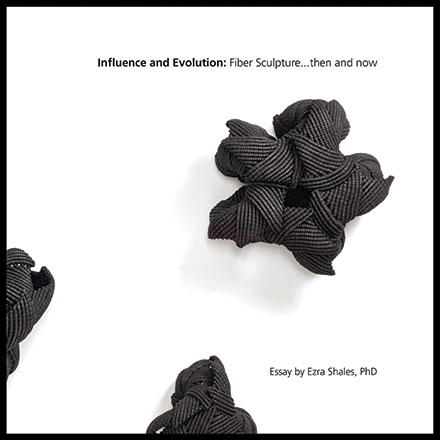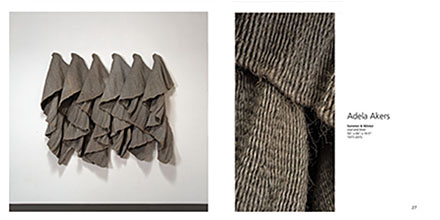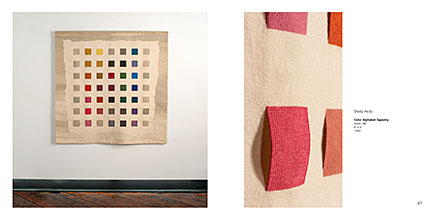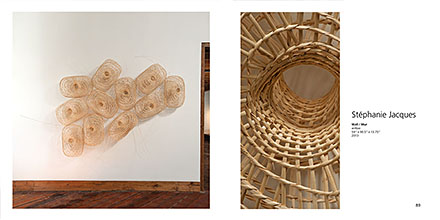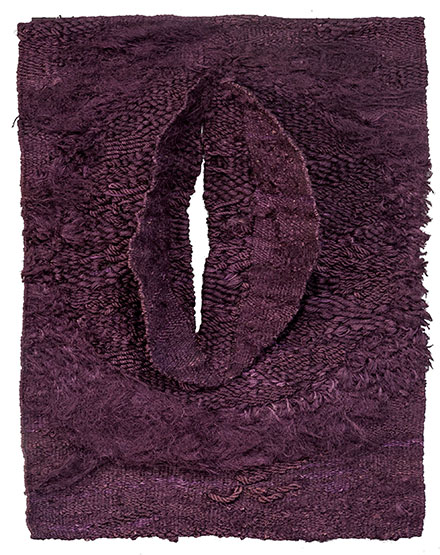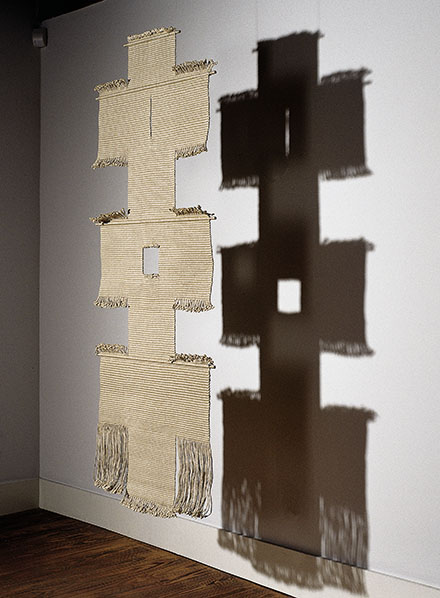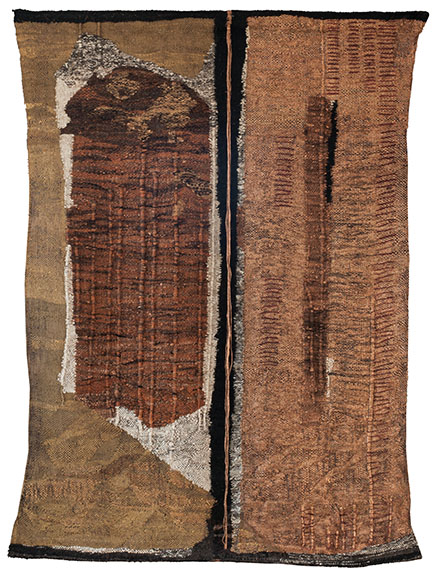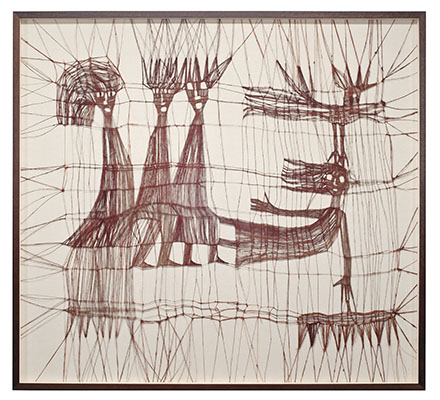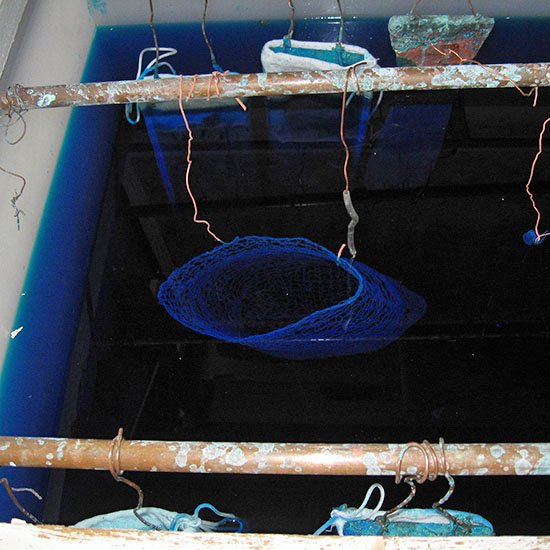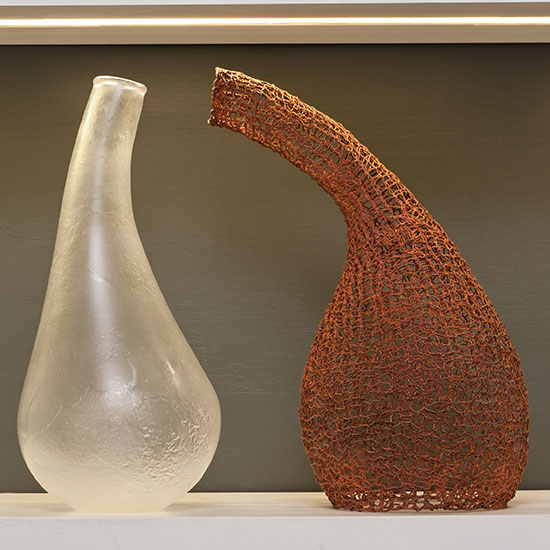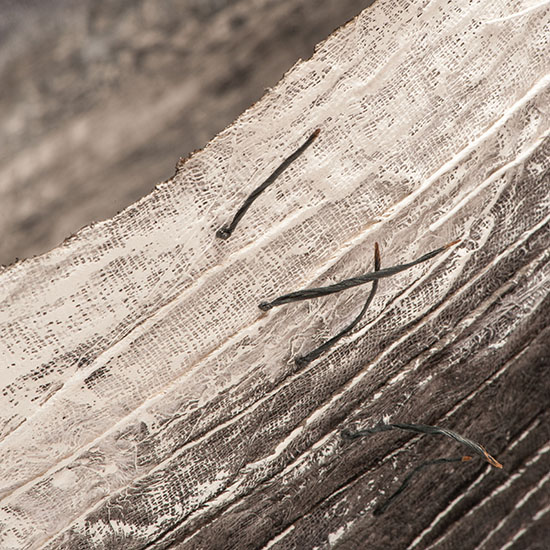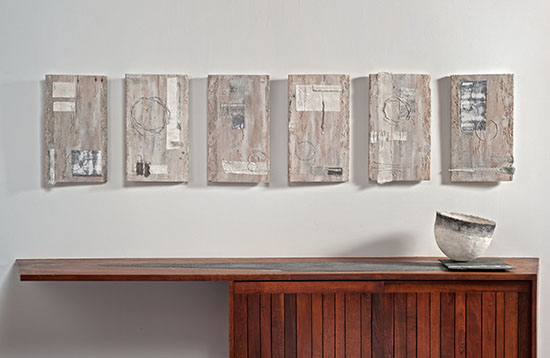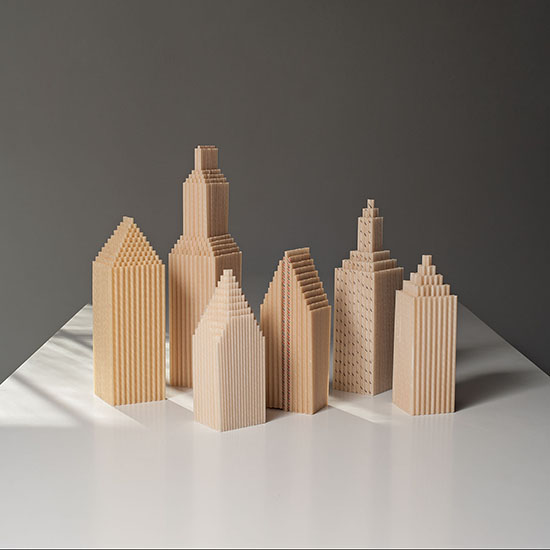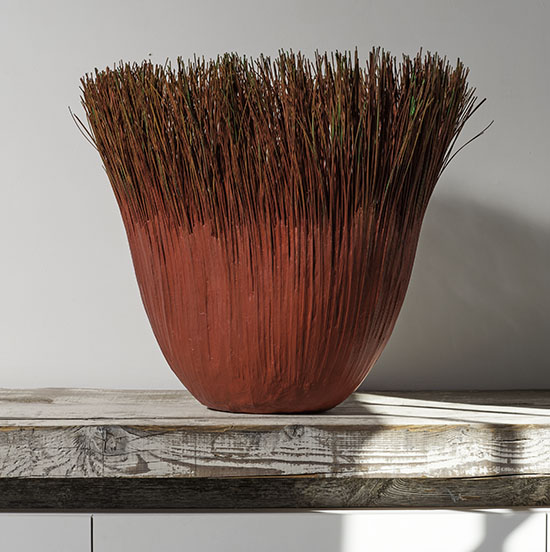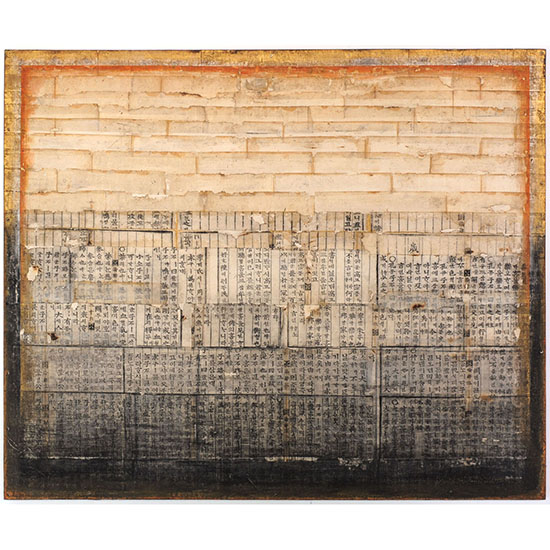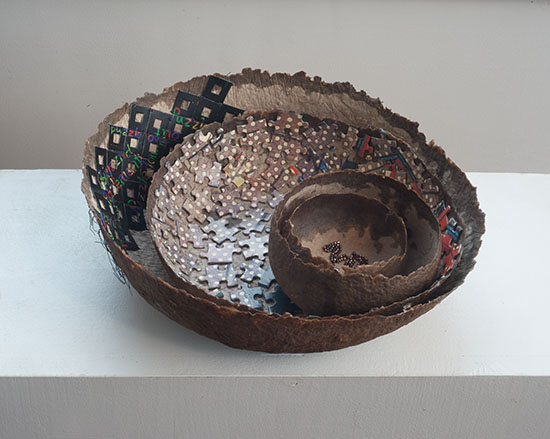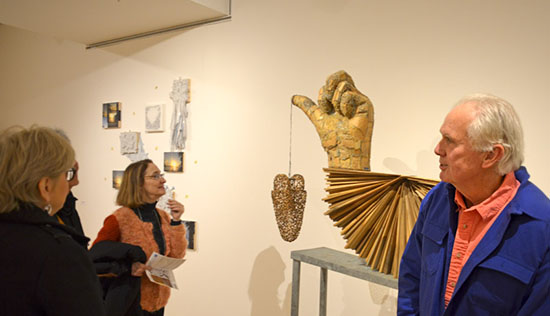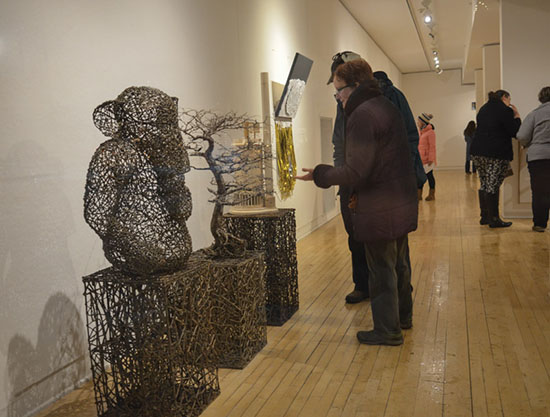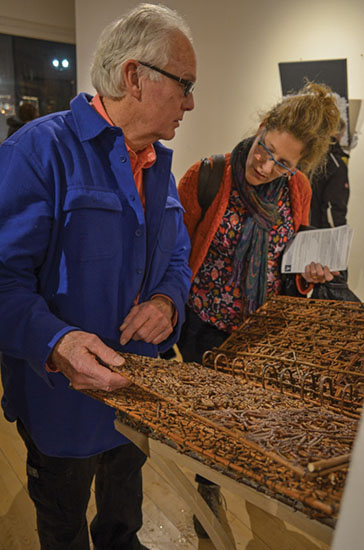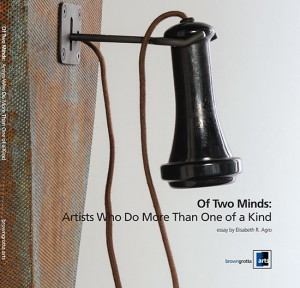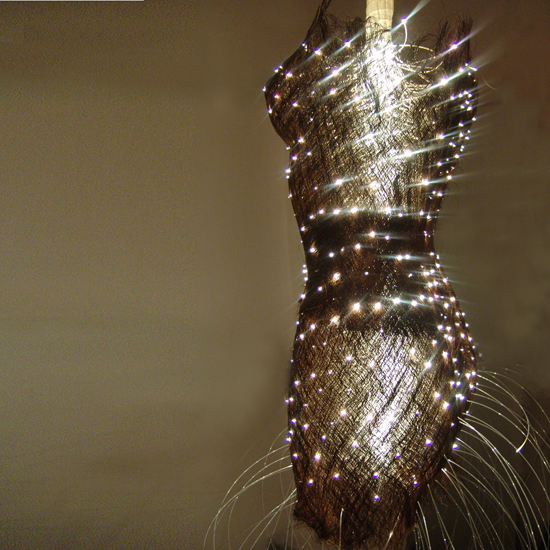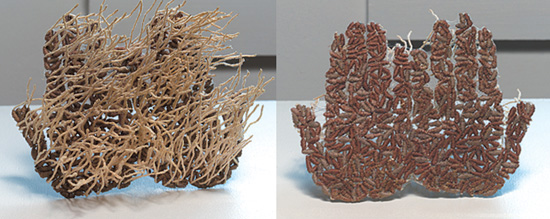Our Spring exhibition Influence and Evolution: Fiber Sculpture…then and now explored the impact of artists – Sheila Hicks, Ritzi Jacobi, Lenore Tawney, Ed Rossbach and others – who took textiles off the wall in the 60s and 70s to create three-dimensional fiber sculpture. In Influence and Evolution, we paired early works by Magdalena Abakanowicz, Lia Cook, Kay Sekimachi and Françoise Grossen — artists who rebelled against tapestry tradition — with works from a later generation of artists, all born in 1960 or after. Fiber sculpture continues to evolve through this second group of artists, including María Eugenia Dávila and Eduardo Portillo of Venezuela,
Stéphanie Jacques of Belgium, Naoko Serino of Japan and Anda Klancic of Slovenia. In our 160-page color exhibition catalog, Influence and Evolution: Fiber Sculpture…then and now, you can see the works in the exhibition. Each artist is represented by at least two works; images of details are included so that readers can experience the works fully. The catalog also includes an insightful essay, Bundling Time and Avant-garde Threadwork by Ezra Shales, PhD, Associate Professor, History of Art Department, Massachusetts College of Art and Design in Boston. Influence and Evolution, Shales write in his essay, “poses rich comparisons and asks the mind to sustain historical linkages. We feel the uneven texture of time, luring us into a multiplicity of artistic pasts and an open road of varied fibrous futures. An emphasis on plural possibilities makes this exhibition quite distinct from a tidy biblical story of genesis or masters and apprentices. We witness multiple intra-generational passing of batons as well as many artists changing horses midstream, as well they often do.” The three works in Influence and Evolution by Adela Akers that traverse five decades provide a fascinating view of the artistic progression Shales refers to. The curvilinear, draped forms of Summer and Winter
(1977; restored 2014), he notes, resemble “both a ruffle and a row of ancient mourners.” Midnight, from 1988, by contrast, is hard-edged, “a monumental window into an alternative architectural space.” And Akers recent work, Silver Waves, completed in 2014, is “an intimate surface with linear imagery” whose horsehair bristles “almost invite a caress if they did not seem to be a defensive adaptation.” Juxtapose Silver Waves with American Michael Radyk’s Swan Point (2013) and and Dutch artist, Marianne Kemp’s Red Fody (2013) that also features horsehair, and catalog readers are likely to understand Shales’ query: should we categorize woven forms as a logical temporal narrative or inevitable sequence of linked inquiries? Shales is a guest curator of Pathmakers: Women in Art, Craft and Design, Midcentury and
Today currently at the Museum of Arts and Design in New York which features more than 100 works, by a core cadre of women—including Ruth Asawa, Sheila Hicks, Karen Karnes, Dorothy Liebes, Toshiko Takaezu, Lenore Tawney, and Eva Zeisel—who had impact and influence as designers, artists and teachers, using materials in innovative ways. To order a copy of Influence and Evolution: Fiber Sculpture…then and now, our 43rd catalog, visit browngrotta.com.

